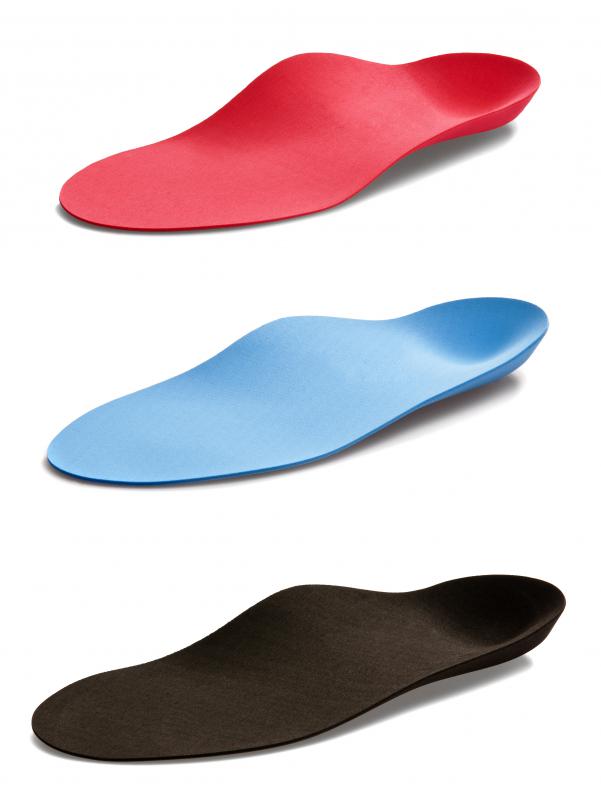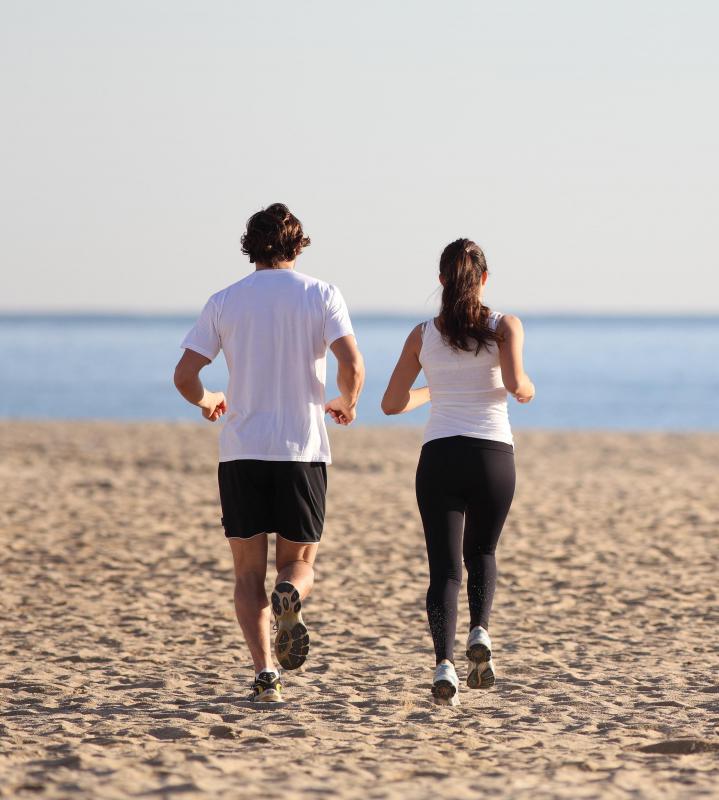At TheHealthBoard, we're committed to delivering accurate, trustworthy information. Our expert-authored content is rigorously fact-checked and sourced from credible authorities. Discover how we uphold the highest standards in providing you with reliable knowledge.
What Are Underpronation Shoes?
Underpronation shoes are designed to encourage the foot and ankle to rotate inward when the foot hits the ground. Such shoes also are referred to as cushioning shoes, because they contain a large amount of soft material to absorb as much impact as possible. The cushioning also allows the foot to roll inward more than other shoes. Underpronation shoes are usually curved in shape without stability features.
When the foot hits the ground, either while running or while walking, the ankle naturally turns inward to absorb some of the shock. Many people, especially those who have flat feet, suffer from overpronation, in which the foot rolls inward too much. This results in stress on the rest of the body’s kinetic chain. A less common condition is underpronation, in which the ankle doesn’t roll inward enough. Underpronation shoes are important for reducing the effects of the condition and preventing injury.

Underpronation shoes are designed to encourage the ankle and foot to move inward as much as possible. Unlike shoes for overpronation, underpronation footwear doesn't have a large amount of support for the foot arch, because this can prevent inward rotation. Shoes that contain medial posts or other types of stability technology should be avoided by underpronators. Underpronation shoes are usually referred to as cushioning shoes, while overpronation shoes are known as motion control or stability shoes.

There are a number of shapes for running shoe, but the three most common categories are straight, curved and semi-curved. Shoes for underpronation are usually curved, because this helps the shoe to pronate as much as possible. Straight shoes don’t encourage pronation and, therefore, aren’t suitable for underpronation.
The ankle doesn’t roll inward as much as it should when a person suffers from underpronation, so the appropriate shoes also contain a lot of cushioning. The ankle and foot don’t absorb the proper amount of impact in people that underpronate, so the shoe is designed to compensate for this as much as possible. Underpronation shoes also help to evenly distribute the force of impact across the foot.

There are a number of brands that manufacture underpronation shoes. While the condition isn’t as common as overpronation, there are still many amateur and professional athletes who suffer from the problem. When choosing an underpronation shoe, it’s important to get them fitted correctly. If the shoe isn’t correctly fitted, then it may not encourage pronation as much as it should.
AS FEATURED ON:
AS FEATURED ON:















Discussion Comments
Pay attention to the way the shoes for this are described. I've noticed they don't always specifically say "for underpronation." Sometimes they'll say something like "extra cushioning" or something similar. While overpronation will be "extra stability". This is especially true of the cheaper models and I suspect it's because they don't have the testing to be able to declare themselves good for a particular condition, even if they are.
@irontoenail - That's one option. You might also want to skip the special shoes altogether and get inserts that you can use in any shoes to help correct your stride.
You'll be surprised at how much better you can feel after a run if you've taken care of these problems.
Another option is to try and run barefoot, but that's not possible for everyone.
They will then try to sell you the most expensive version of whatever kind of shoe you need. Make sure they outright tell you what the problem is. You'll either be over or underpronating, or you may be neutral or possibly some other problem.
If you must buy shoes from them, go ahead, but make them show you the cheaper versions. They are often just as good (sometimes better).
But you are often under no obligation to buy. You're better off getting your diagnosis, and then going off to get some shoes from online, because they are going to be much cheaper and almost all sports sites now group them according to your foot needs.
Post your comments